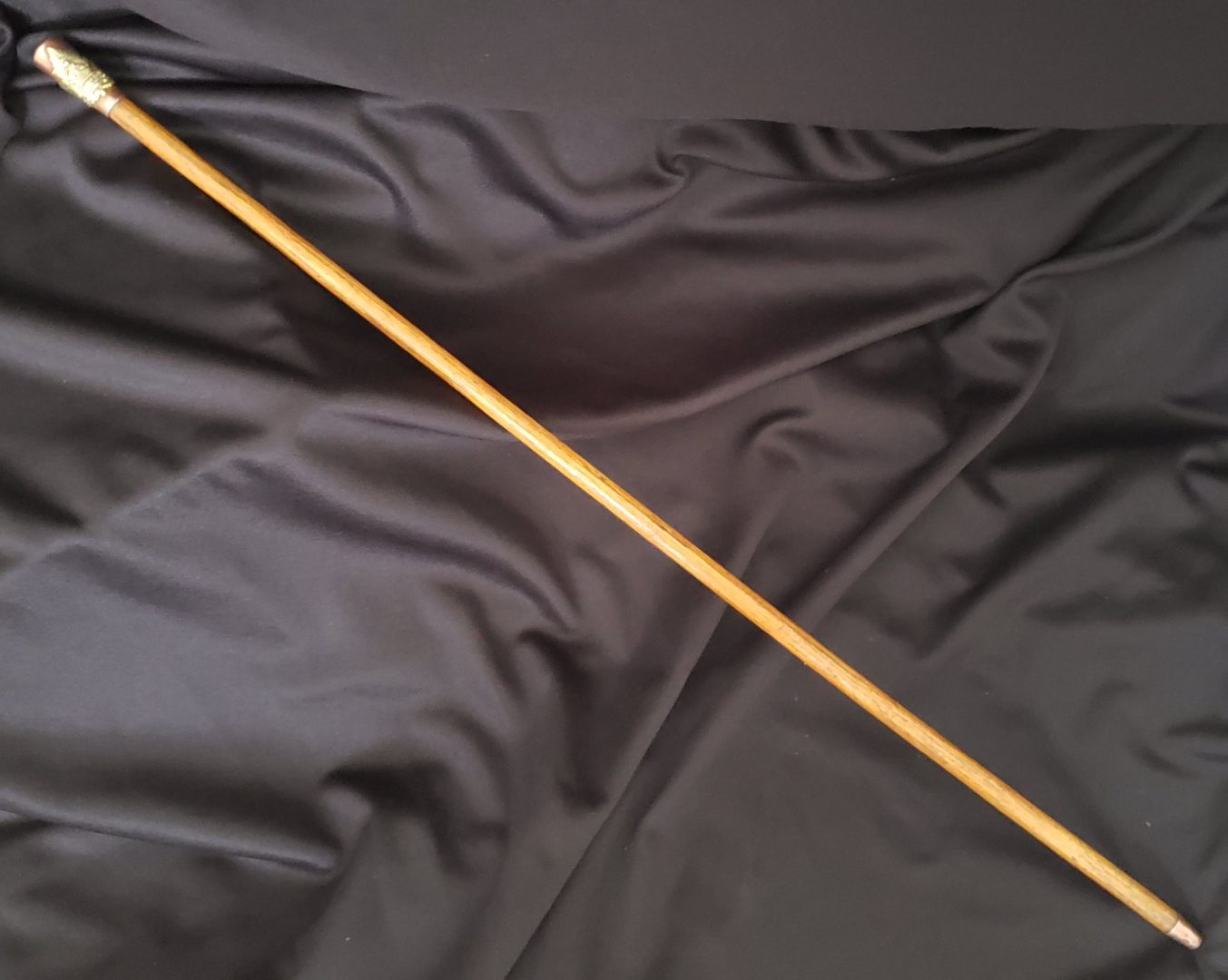This stick, commonly referred to as a military cane, belonged to Henri Godin. Usually reserved for officers, while Henri was a simple soldier for barely a few months, this stick with a wooden barrel has a brass knob that displays the coat of arms of the Canadian Expeditionary Force, along with the inscription “Canada,” which are quite similar to the pins worn by soldiers on their uniforms or caps. The tip, or ferrule, is also made of brass.
Henri Godin was the son of Alexina Lessard (1872-1960) and Ernest Godin (1868-1943), natives of Saint-Étienne-des-Grès, in the northwestern suburbs of Trois-Rivières. The couple got married in their native parish in 1893. At the time of their wedding, Ernest was a labourer in Saint-Flore. The couple later settled in Shawinigan, then Trois-Rivières. At that time, Ernest held the position of machinist at Canadian Pacific. The family lived very close to the station.
The First World War had been raging in Europe since 1914. Canada was involved in the conflict in support of the British crown. This was a deadly war that struggled to awaken the patriotic instincts of French Canadians. The federal government therefore considered introducing conscription. The election held on December 17, 1917, gave a majority to Prime Minister Robert Laird Borden and the party that he led in the House of Commons in Ottawa. Conscription was proclaimed and took effect in early 1918. Young people, including married men without children, were therefore forced to join the Canadian army. Despite riots, especially in Quebec, many decided, probably reluctantly, to enlist. Many others, whose number is estimated at more than 18,000 men, disappeared or went into hiding to flee this law that they considered abusive.
Henri Godin was among those who enlisted.
Upon reading the military file for Henri Godin, accessible online via the Library and Archives Canada portal, Personnel Records of the First World War for the Canadian Expeditionary Force (CEF), we learn that he was born on March 11, 1896, in Shawinigan and that his service number was 3164619.
Henri was the eldest of the couple’s children. He had two brothers, Welly (Wellie) and Wilfrid, and two sisters, Claircy (sic) and Alice. When he enlisted, he was single and Catholic; he was 5 feet, 4 inches tall, had blue eyes, and was a machinist. He underwent an initial medical examination on July 2, 1918, in Montreal.
A little over a month later, he was admitted to the Quebec City military hospital on August 14, 1918, for further examinations; Henri Godin received his leave from the hospital on August 29. He was then officially discharged from the army on October 15, 1918, due to disabilities related to his health status. He had persistent otitis externa, his hearing was impaired, and he had an eczema problem on his hands and legs.
Upon returning to Trois-Rivières, Henri Godin married Laura Rochette in 1919. The couple lived for a few years in Trois-Rivières, on rue Sainte-Cécile, in the Notre-Dame district. In the 1921 Canadian census, he was a spinner in a cotton mill and knew how to speak English. A little later, the couple settled in Drummondville.
Henri Godin died in Trois-Rivières on June 13, 1975. His wife had died in April 1974. They had no children.
Donation from Alice Godin
Musée Pierre-Boucher Collection
1983 66 C

